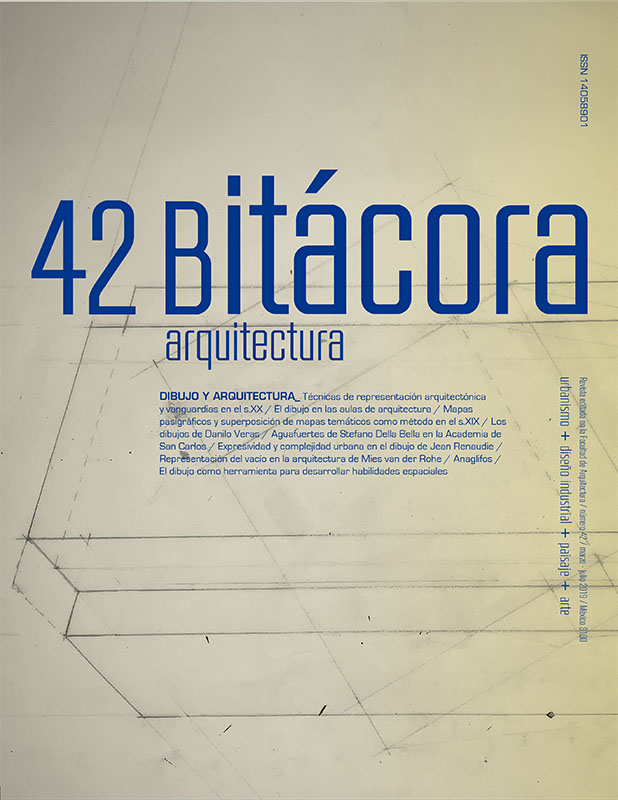From Sketches to Collage: The Paradoxical Representation of the Void in Mies van der Rohe’s Architecture
Main Article Content
Abstract
How does one represent the void when it is invisible and lacks limits, yet constitutes the basis
of an entire architecture? This foundational paradox of modernity was radically expressed by
the intuitive explorations of Mies van der Rohe in his sketches for courtyard houses in late-
1920s Europe, sketches that culminated in his most astonishing, accomplished project: the
Barcelona Pavilion; in later years, these explorations were expressed through the collages
for his first American project, the Resor House. Examining these sketches and collages will
reveal the architect’s visionary ambitions and the difficulties in making them a material reality;
paradoxically, this is one of the aspects that the unlimited, weightless and unfinished void
lacks, which his architecture “constructed” aporetically, making it just another material, if not
the most important.
Article Details
Citas en Dimensions Service
Bitácora Arquitectura by Universidad Nacional Autónoma de México is licensed under a Creative Commons Reconocimiento-NoComercial-SinObraDerivada 4.0 Internacional License.
Creado a partir de la obra en http://arquitectura.unam.mx/bitacora.html.

